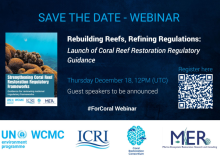
A new study led by researchers at the University of Hawai‘i (UH) at Mānoa published on 6 November in Nature Communications is the first-of-its-kind to show that waste discharged from deep-sea mining operations in the Pacific’s biodiverse Clarion-Clipperton Zone (CCZ) could disrupt marine life in the midwater “twilight zone” — a vital region 200-1,500 meters below sea level that supports vast communities of zooplankton, tiny animals that serve as the ocean’s basic food building blocks. Specifically, it finds that 53% of all zooplankton and 60% of micronekton, which feed on zooplankton, would be impacted by the discharge, which could ultimately impact predators higher up on the food web.
When the waste released by mining activity enters the ocean, it creates water as murky as the mud-filled Mississippi River. The pervasive particles dilute the nutritious, natural food particles usually consumed by tiny, drifting Zooplankton,” said Michael Dowd, lead author of the study and Oceanography graduate student in the UH Mānoa School of Ocean and Earth Science and Technology (SOEST). “Micronekton, small shrimp, fish and other animals that swim, feed on zooplankton. Some migrate between the depths and near surface waters and they are consumed by fish, seabirds and marine mammals. Zooplankton’s exposure to junk food sediment has the potential to disrupt the entire food web.”









